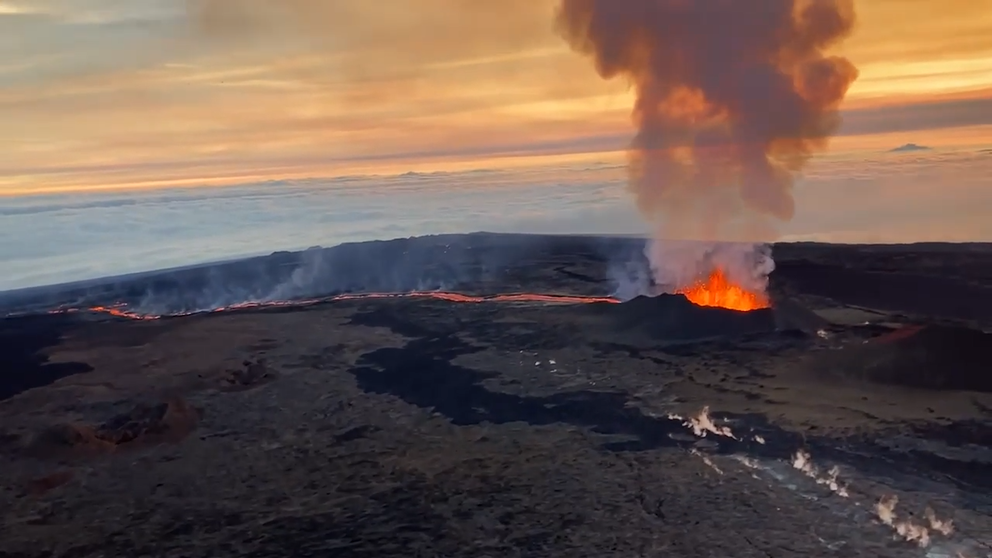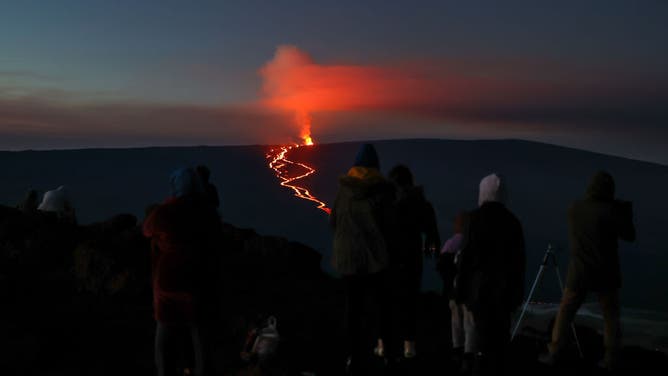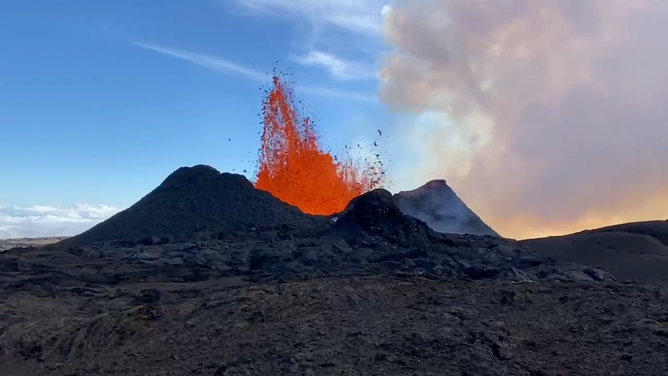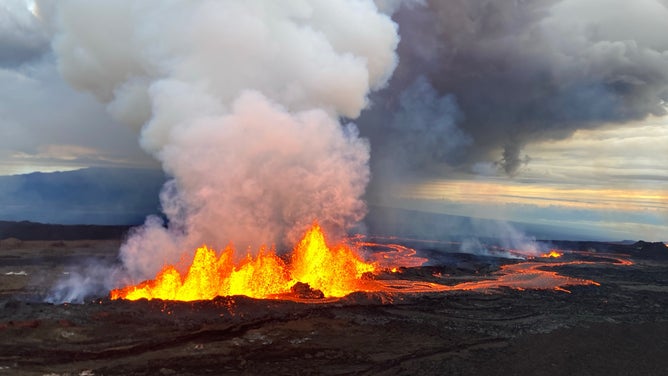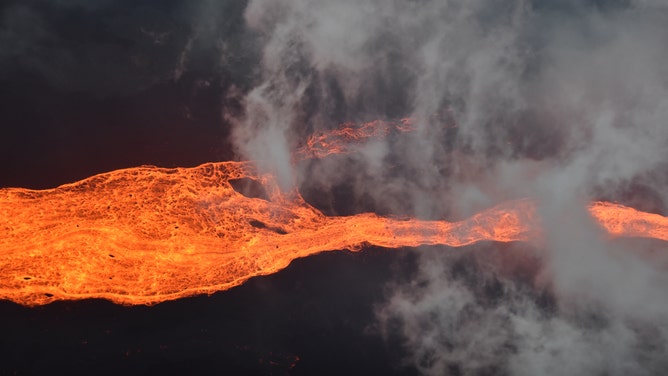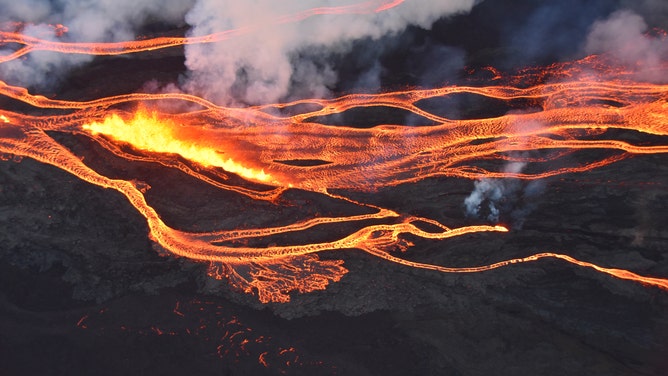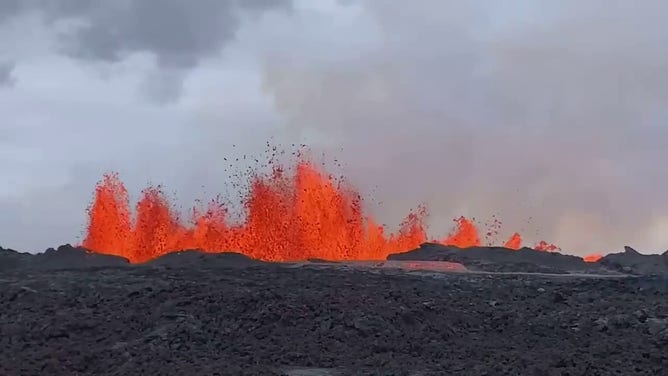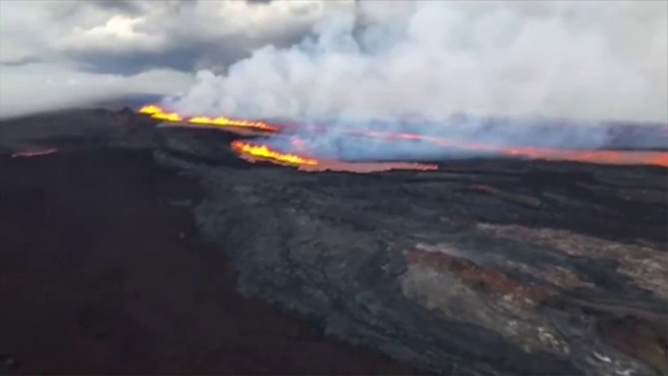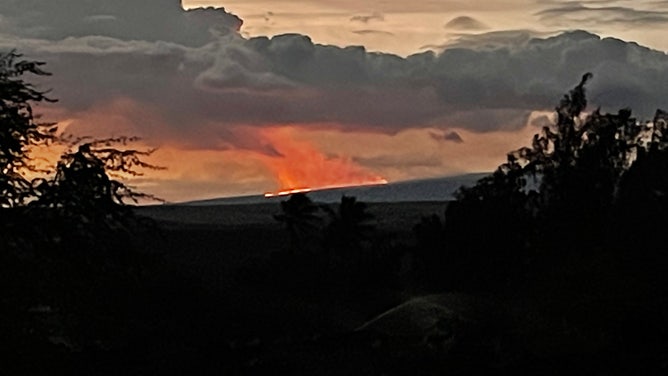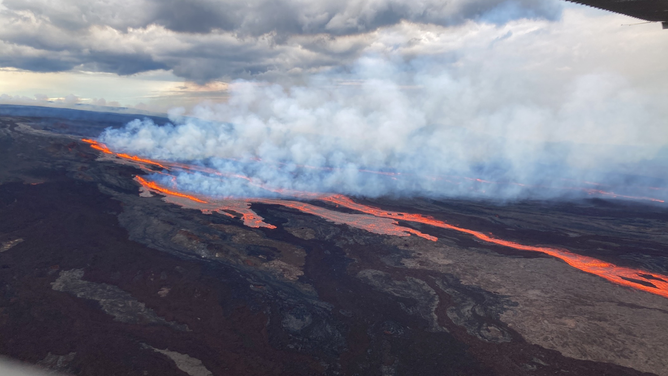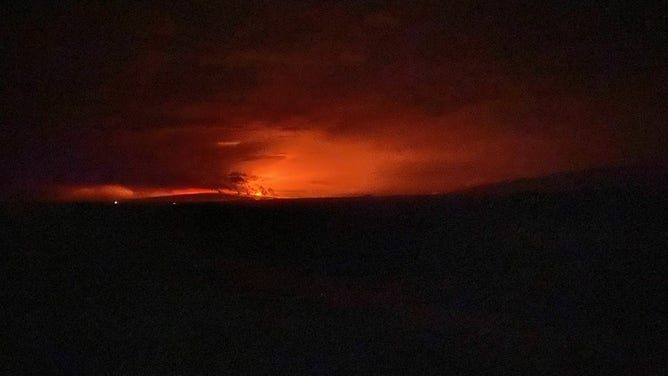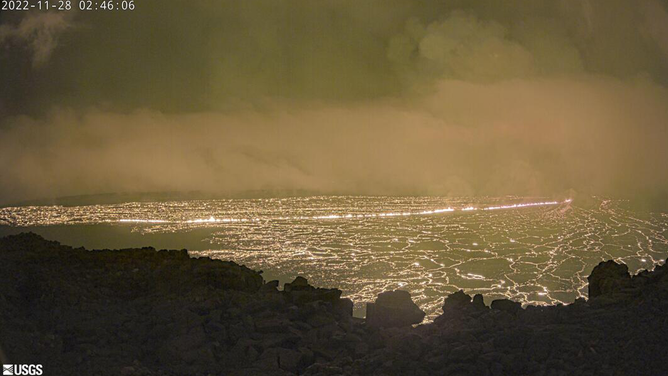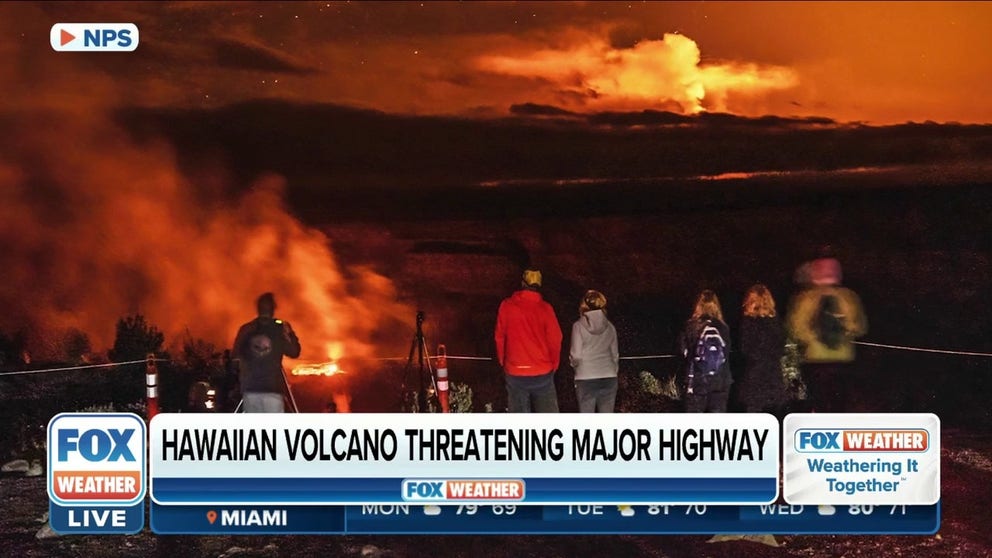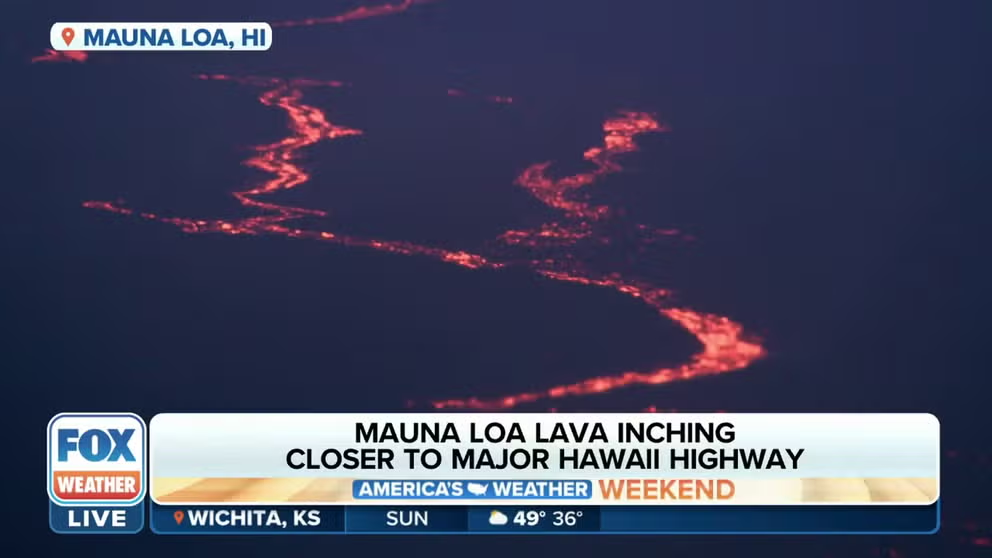Hawaii's Mauna Loa volcano eruption continues: New aerial video shows lava edging closer to main highway
As of Monday morning, the lava from Fissure 3 was about 2.16 miles from the Daniel K. Inouye Highway as flows advanced at an average rate of about 25 feet per hour.
Mauna Loa: Lava flow from world's largest active volcano creeping closer to major highway
The nonstop flow of lava from Mauna Loa continues to creep closer to major infrastructure on Hawaii’s Big Island.
MAUNA LOA, Hawaii – New aerial video shared Sunday by the U.S. Geological Survey showed lava from an active fissure on Hawaii's Mauna Loa volcano creeping closer to one of the main highways that connects the cities of Hilo and Kona on the Big Island of Hawaii.
Mauna Loa, the world's largest active volcano, began erupting on Nov. 27 after remaining quiet for nearly 40 years.
The last time Mauna Loa erupted was in 1984, and when the eruption began more than a week ago, it ended the longest streak on record between eruptions.
Lava from the Mauna Lao volcano continues to move closer to highway
Footage captured by the U.S. Geological Survey (USGS) shows lava spurting from the Mauna Loa volcano in Hawaii moving closer to Daniel K. Inouye Highway on Sunday, Dec. 4.
According to the USGS, one active fissure, Fissure 3, has been feeding lava flows downslope, with lava flowing to the north toward the Daniel K. Inouye Highway (Saddle Road).
Scientists said the lava flows have slowed down significantly over the past several days because they have reached relatively flatter ground around the rumbling mountain.
LAVA FLOW THREATENS TO CUT OFF MAIN THOROUGHFARE ON HAWAII'S BIG ISLAND
As of Monday morning, the lava from Fissure 3 was about 2.16 miles from the Daniel K. Inouye Highway as flows advanced at an average rate of about 25 feet per hour.
However, the USGS noted there are many variables at play, and both the direction and timing of flow advances are expected to change over periods of hours to days. That makes it difficult to estimate when or if the lava flows will impact this main highway.
In fact, lava flow rates may be highly variable over the coming days and weeks because of the way the lava is situated on flat ground between Mauna Loa and Mauna Kea. According to the USGS, individual lobes may advance quickly and then stall, and additional breakouts could occur if lava channels get blocked upslope.
VOLCANO CAM: WATCH MESMERIZING LIVE VIEWS OF MAUNA LOA'S LAVA FOUNTAIN ERUPTING
Mauna Loa volcano eruption continues for second week
Hawaii's Mauna Loa volcano continues to erupt but lava flows have slowed with sporadic advancements. FOX Weather Correspondent Max Gorden reports from the Big Island on how officials are preparing for potential impacts.
In addition to the lava, the eruption of Mauna Loa is sending volcanic gas plumes high into the air before being blown to the west at high altitudes, generating vog (volcanic air pollution) in areas downwind of the volcano. Sulfur dioxide emission rates also remain elevated, contributing to poor air quality.
Pele's Hair has also been falling in the Humu'ula Saddle area downwind of Mauna Loa and has even been reported as far away as Laupāhoehoe after being transported by high winds. Pele's Hair refers to thin strands of volcanic glass fibers formed from gas amid explosions within the turbulent cauldron.
According to the USGS, tremors are continuing beneath Fissure 3, which indicates magma is still being supplied to this active fissure on Mauna Loa. Activity is likely to continue as long as those tremors persist.
Scientists said they don't anticipate eruptive activity outside the Northeast Rift Zone.
KEY CLIMATE CHANGE MONITORING SITE TAKEN OFFLINE BY MAUNA LOA ERUPTION
Mauna Loa history
Lava from Mauna Loa volcano inching closer to major Hawaii highway
Hawaii's Mauna Loa volcano has now been erupting for a week. The lava flows continue to crawl closer to Hawaii Route 200, a major highway across the Big Island. FOX Weather correspondent Max Gorden reports the lava flow has slowed significantly.
Since 1843, Mauna Loa has erupted 33 times, averaging an eruption every five years. However, most eruptions before 1950 had an average frequency of 3.5 years. Since 1950, there have only been two eruptions – a summit eruption in 1975 and a rift eruption in 1984.
